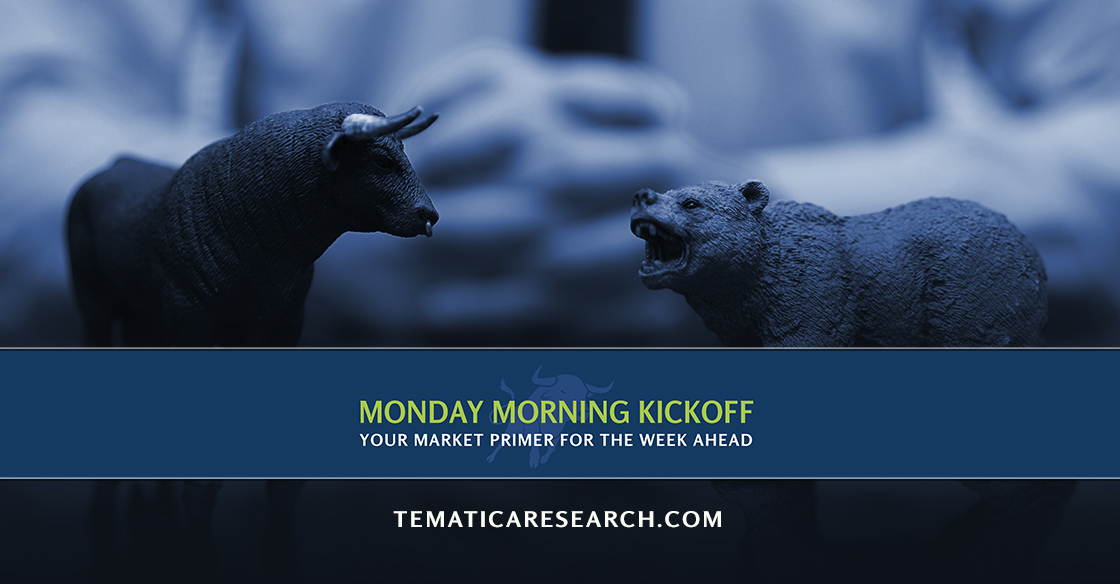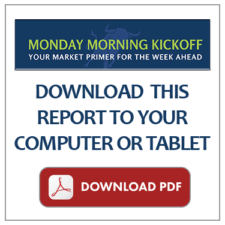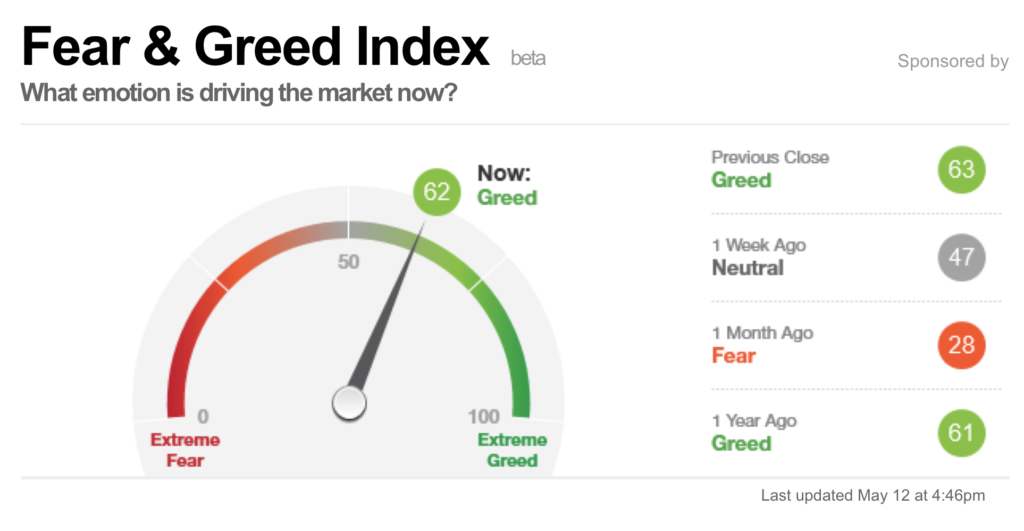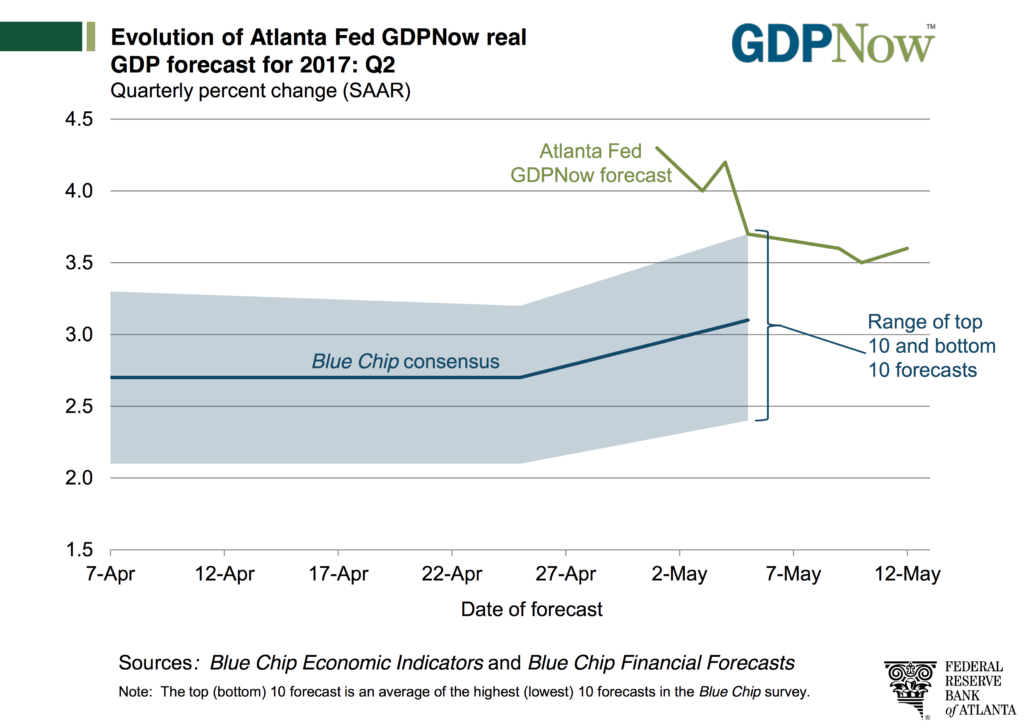A Very Different Picture Developing for the Second Quarter
DOWNLOAD THIS WEEK’S ISSUE
The full content of The Monday Morning Kickoff is below; however downloading the full issue provides detailed performance tables and charts. Click here to download.
Last week was a mixed one for the markets with the Dow Jones Industrial Average and the S&P 500 indices turning in flat to slightly down results, while the tech-laden Nasdaq Composite Index powered higher by more than 0.5 percent. With today’s market open, we are officially halfway through 2Q 2017. We realize that’s a tad hard to swallow seeing as how we’ve just had a barrage of corporate earnings with more on the way this week as retail earnings swing into gear.
The picture we’re seeing by the major market indices over the first half of the current quarter is rather different than that of 1Q 2017. Over the last six weeks, the S&P 500 has risen just 1.2 percent, which means the bulk of its year to date return of 6.7 percent was had in the first quarter. Breaking down the year-to-date return of both the Dow Jones Industrial Average as well as the Nasdaq Composite Index, we find that pattern to be consistent. We’d also note that while the S&P 500 is not far from overbought territory, the Nasdaq, which has been the primary driver of the market in recent weeks, is firmly in overbought territory.
All that as the market remains valued at more than 18x expected 2017 earnings and the CNN Fear & Greed Index has rebounded to Greed (62) from Fear (28) over the last month. Not exactly something that helps one sleep at night.
So What Changed Between the First and Second Quarter?
The short answer to the question of why the market has generally marched sideways for most of the second quarter thus far is the emergence of continued signs of a slowing US economy. We dug into the details in last week’s Cocktail Investing podcast in spades, corporate earnings reports have led to reduced expectations for the current quarter and companies with meaningful international exposure are citing the strong dollar. We’ve also had some happenings in DC that raise the question over how long until we begin to see President Trump’s stimulative initiatives take hold.
In a round of what we can only call business as usual in Washington, Commerce Secretary Wilbur Ross shared the view that the US economy “won’t achieve the Trump administration’s 3 percent growth goal this year and not until all of its tax, regulatory, trade and energy policies are fully in place.” Ross goes on to say that the growth target “ultimately could be achieved in the year after all of President Donald Trump’s business-friendly policies are implemented” but that “delays were possible if the push for tax cuts was slowed down in Congress.”
Valid points given the reality that without a jolt to the system, odds are the US economy will remain in low gear. If you said you smelled some politicking going on, we’d have to agree. That’s why we’ll continue to let the data talk to us, and so far it’s telling us the odds of a significant rebound in the US economy from 1Q 2017’s abysmal GDP reading of 0.7 percent is looking less likely.
We’d note the Atlanta Fed’s GDP reading for the current quarter has slipped to 3.6 percent as of today from 4.3 percent on May 1; by comparison, the NY Fed’s GDP Nowcasting reading for 2Q 2017 is now 1.9 percent compared to 2.3 percent on April 28. Again, we covered all of that on this week’s Cocktail Investing podcast, which you can listen to here.
Insights from Last Week’s Data Flow
There were just a few major economic data points to be had last week, all of which came in weaker than expected, PPI and CPI inflation indicators. Not much of a surprise given what we’ve seen in the Bloomberg Inflation Index — a wide basket of commodities — which is down more than 8 percent since February. The triangulation of these inflation metrics, in our opinion, removes the Fed’s inflation argument as it looks to raise rates. We continue to think the Fed is more likely thinking it needs to put more arrows in its quiver should the current soft patch turn into something more.
At a minimum, we’re likely to face a continued slow growth economy given the demographic challenges associated with our Aging of the Population investing theme and the lack of purchasing power among Cash-strapped Consumers. As the Fed inches rates higher, we’ll see the impact in higher credit card payments on that more than $1 trillion outstanding credit card debt.
Despite having the added benefit of the late Easter holiday, even though April Retail Sales rose month over month the figure still once again missed expectations. Building materials and e-tailing were the highlights of the report, which offset declines in furniture, general merchandise, food and clothing. That report along with what we heard last week from Macy’ (M), Kohl’s (KSS), Nordstrom (JWN) and JC Penney (JCP) paints a very troubling outlook for retail. Reading between each of those reports, we continue to see confirming signs of not only the creative destruction that Amazon (AMZN) has unleashed on retail, but the accelerating shift toward digital commerce that is a hallmark of our Connected Society investing theme. With Amazon looking to disrupt other industries we continue to think that Amazon is a stock to hold (invest) not trade.
We’ll have more in-depth thoughts on retail on TematicaResearch.com later in the week, but from our view, it’s hard to see how some of the GDP expectations for the current quarter as well as the back half of the year will materialize given the fiscal shape of the consumer.
Turning to the Week Ahead
This week we have a good flow of economic data which continues to fill in the April picture with Housing Starts, Building Permits, Industrial Production and Capacity Utilization as well as the Leading Indicators report. We also get our first look at data for May thanks to the Empire Manufacturing Index and Philly Fed Index. While those indices are regional in nature, they will help shed light on how the economy if fairing as we now halfway through the current quarter. In our view that should make speeches by St. Louis Federal Reserve Bank President James Bullard and Cleveland Federal Reserve Bank President Loretta Mester late next week all the more interesting.
Yep, we’re some crazy people that find Fed speeches interesting, but you can refer to us here as dorks.
On a somewhat positive, we will see a pronounced step down in the pace of earnings reports. On the downside, this week, we’ll hear from a number of retailers including Dick’s Sporting Goods (DKS), Target (TGT) and Ross Stores (ROST) among others, and we’ll be looking to determine if “retail-mageddon” is as widespread across brick & mortar retailers as the data implies. We suspect the answer is “yes” and we can point to declining mall traffic per comments from Starbucks (SBUX) and others as evidence. This gives us pause with regard to SPDR S&P Retail ETF (XRT) shares.
The other piece of supporting data is found in the e-tailing/nonstore line item for the monthly Retail Sales report over the last several months, which has continued to outpace overall retail sales. What this says is digital commerce is taking share from brick & mortar retailer and this is a great example of how listening to the data can help one see what is on the horizon like we try to do here at Tematica.
One retailer, in particular, has stood out relative to the pack and that is Costco Wholesale (COST), which not only offers items in bulk, but has been expanding its fresh foods offering to bring consumers back to the warehouse more frequently. The fact the company continues to expand the number of warehouse locations is also a positive given the favorable impact of membership fees on is overall operating income. Perhaps we’re biased, but on the other hand, we’ve never gotten out of a Costco location without dropping a few hundred dollars in the process.
Also on the earnings deck this week is Applied Materials (AMAT), and demand for its semiconductor capital and display equipment should give us a good understanding of ramping semi capacity as well as that for organic light emitting diodes. For those who haven’t been following the story, organic light emitting diodes displays (OLEDs) are the next go-to display technology given their emissive qualities, which allow for thinner and less power-hungry displays. We see the technology being adopted much the way light emitting diodes were adopted to backlight liquid crystal displays in mobile phones, tablets, wearables, TVs, auto interiors and other applications.
In other words, while Apple (AAPL) and the iPhone are the buzz behind organic light emitting diode adoption this year, there expected usage is far more widespread. Subscribers that heeded our call to action last October and bought shares of Universal Display (OLED) would be up more than 110 percent as of Friday’s market close.
We’d note that thus far corporate earnings for 1Q 2017 have held up rather well, but that was before we started to hear from retailers. With 90 percent of the S&P 500 companies having reported, odds are we won’t see a significant downward revision in 1Q 2017 EPS for the S&P 500 group of companies as more retailers share their quarterly results. That said, we will be far more interested in retailer comments over the health of the consumer and his or her ability to spend. As we pointed out in last week’s Monday Morning Kickoff, we’ve seen Capital One (COF) and Synchrony Financial (SYF) boost their net charge-off expectations, which isn’t exactly a ringing endorsement for consumers. No matter the reason, if consumers aren’t spending or more to the point aren’t spending as much as economists thought they would that puts a significant crimp in the speed of the domestic economy and gives a high probability to more downward GDP revisions.
We’ll be sure to scope out data from others reporting and puzzle it through our investing matrix, but as the velocity of earnings winds down, we’ll be looking at opportunities to put some cash to work to keep the profits coming on the Tematica Select List.
A Thematic Perspective on Earnings Reports Coming Up This Week
Affordable Luxury: Perry Ellis (PERY), Ralph Lauren (RL)
Asset-lite Business Models: Salesforce (CRM)
Cash-strapped Consumer: Buckle (BKE), Campbell Soup (CPB), Staples (SPLS), Ross Stores (ROST), Wal-Mart (WMT)
Connected Society: Alibaba (BABA), Cisco Systems (CSCO), Trivago (TRVG), Weibo (WB)
Disruptive Technology: Applied Materials (AMAT), Mobileye NV (MBLY), Stratasys (SSYS)
Economic Acceleration/Deceleration: Advanced Drainage Systems (WMS)
Fattening of the Population: Famous Dave’s (DAVE), Flower Foods (FLO), Jack in the Box (JACK), Red Robin Gourmet (RRGB)
Rise & Fall of the Middle Class: American Eagle (AEO), Dick’s Sporting Goods (DKS), Foot Locker (FL), Gap (GPS), Hibbett Sporting (HIBB), L Brands (LB), Target (TGT), Urban Outfitters (URBN)




